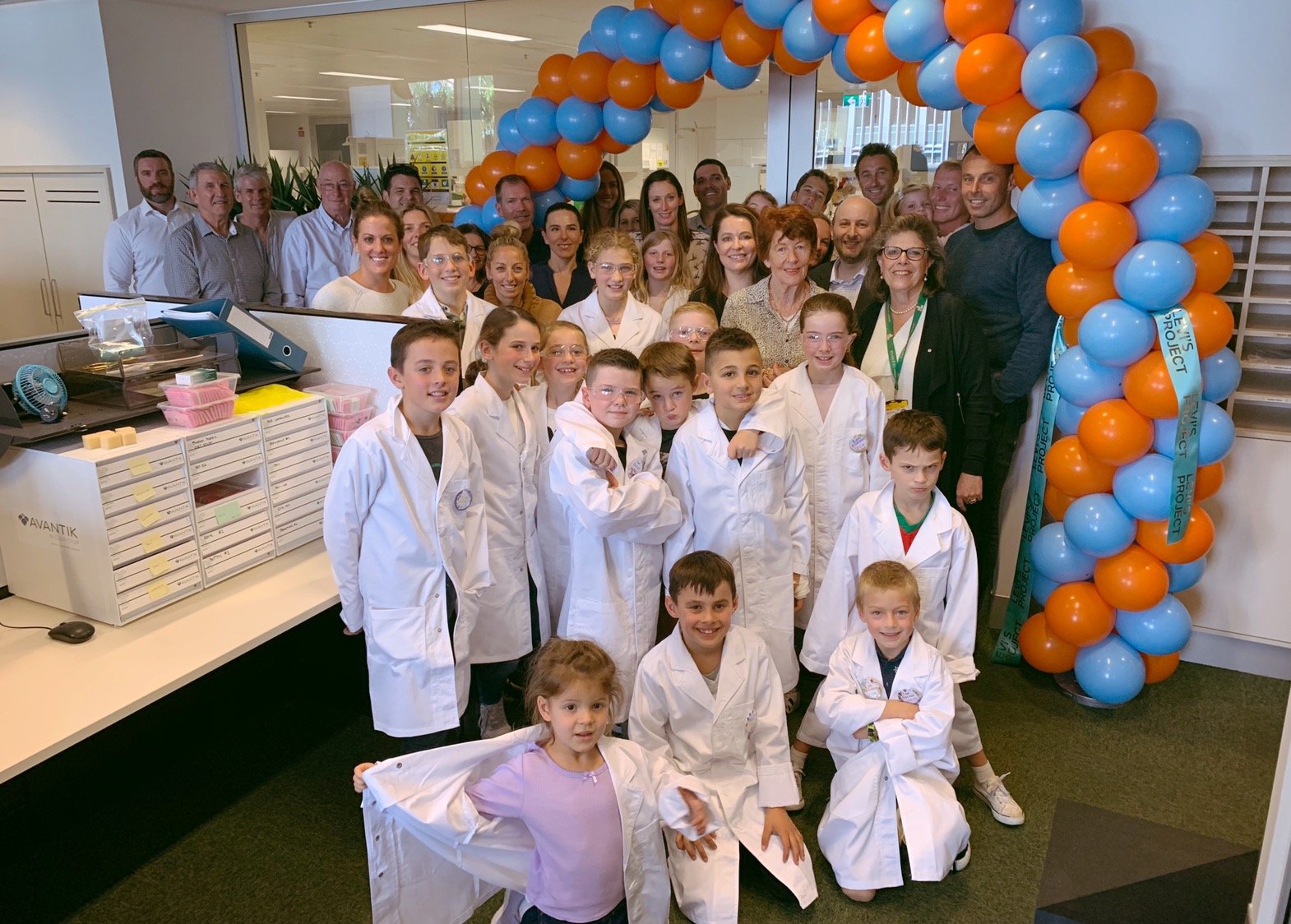Levi’s Project is $5.8m commitment to DIPG research, funding 5 research positions, game-changing research projects and clinical trails to give families hope
ABOUT levi’s project
Levi’s Project aims to develop a comprehensive and effective treatment strategy designed specifically for DIPG.
The project builds on research previously done at Children’s Cancer Institute (CCI). CCI established Australia’s first-ever DIPG tumour bank, which contains samples of tumours from children with DIPG, and have tested a range of drugs against DIPG cells grown from these samples.
To date, scientists at CCI have identified five drugs that appear to be highly effective at killing DIPG cells, and have tested these in our laboratory models of disease. The results have been extremely promising and strongly suggest that a coordinated combination of these drugs has the potential to significantly improve survival in children with DIPG.
We are now conducting a series of experiments to find out the most effective combinations of these drugs against DIPG, and will work with our clinical colleagues to take these drugs to clinical trial in children. By working out which combinations of drugs work best, at what doses, and with which timing, a comprehensive clinical protocol can be developed to use in children diagnosed with DIPG.
Levi’s Project has been created in honour of Levi Wheeler, an extraordinary boy who died from DIPG in 2018. Levi was eight years old. Levi was a legend.
Game-changing approach
Levi’s project is developing four new research arms to shape the next generation of combination therapies for DIPG. Take a closer look:
-
Defining new targets and new DIPG therapies through data and analysis gleaned from Zero Childhood Cancer, Australia’s first-ever precision medicine program for kids with cancer.
-
Improving our understanding of how currently available treatments, such as CBL0137, DFMO/AMXT 1501, ACT001 and antiGD2-CAR, work and influence the tumour microenvironment and develop new combination therapies for clinical translation.
-
Optimise combination therapies, such as ACT001, using data from Zero Childhood Cancer and tumour material to determine which oncogenic pathways are affected and how to combine it with clinically available agents rationally.
-
Understanding how DIPG influences the brain vasculature and identify Blood Brain Barrier modulators that can enhance the penetration of targeted chemotherapies and immunotherapy agents into the brain.
research projects
-
A critical problem in improving treatments for DIPG has been the lack of surgical tissue for biological studies in the laboratory. To address this, Children’s Cacner Institute (CCI) initiated a national DIPG tumour donation program.
With tissue donated from post-mortem samples, CCI have grown a panel of DIPG neurosphere cultures. These represent a unique platform on which to investigate the biology of DIPG and to test novel therapies. We have also developed unique mouse models of DIPG and performed robotic high throughput screens to identify novel therapeutic approaches. Further combination screens of the most effective compounds have identified potentially useful combination therapies.
-
We are currently investigating a number of different therapeutic strategies to treat DIPG and other high-risk brain tumours. These strategies include:
Modulation of cellular metabolism.
Targeting the mitochondria – the cancer cell’s powerhouse.
Targeting the epigenome.
Targeting cellular growth factors and tyrosine kinases.
Targeting the cell cycle apparatus.
Developing radiation therapy sensitising agents.
Investigating novel immunotherapeutic strategies.
We recognise that none of these strategies alone is likely to be sufficient to eradicate tumours such as DIPG. We therefore have a strong emphasis on developing rational combination therapies.
-
The Zero Childhood Cancer Program (ZERO) seeks to identify personalised therapies for children with high risk cancers at Children’s Cancer Institute. Within ZERO, the Brain Tumours Group leads the brain tumour arm of the program, which provides genomic analysis, in vitro drug screening, and in vivo personalised xenograft models for children with brain tumours.
In addition to defining novel therapeutic approaches for children participating in the ZERO national clinical trial (which A/Prof Ziegler chairs) in real time, our group leads a research discovery program that utilises the rich database of genomic and drug screening data being generated by ZERO to investigate novel therapies for all high risk childhood brain tumours.
Children’s Cancer Institute
Founded in 1976 by two dads of children with cancer, Children’s Cancer Institute is the only independent medical research institute in the country devoted to research into the causes, prevention and cure of childhood cancer.
First established as a foundation that funded the few small research projects then being undertaken, Children’s Cancer Institute opened its own research laboratories in 1984. Since then, the Institute has grown to employ more than 150 staff and students and has established a national and international reputation for scientific excellence. Their vision is to save the lives of all children with cancer and to eliminate their suffering.
See ccia.org.au for more information
The Team
Levi’s Project funds five dedicated scientists who work specifically on this very important research project for DIPG.
funding announcement
Levi’s Project has announced a further $2.4m of funding to DIPG research, bringing our total commitment to $5.8m





